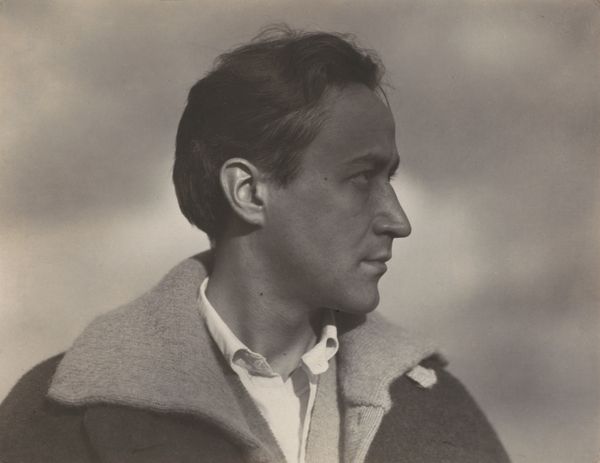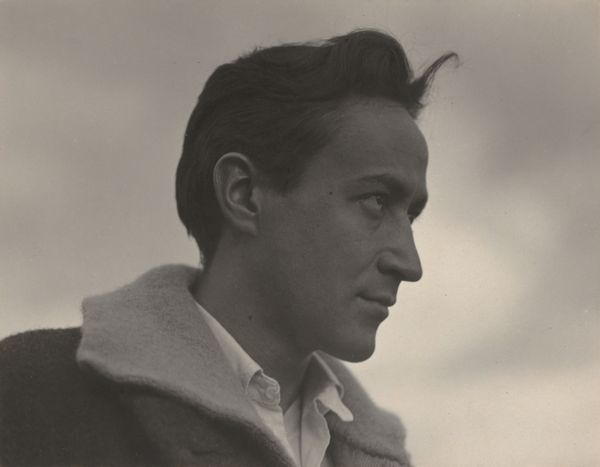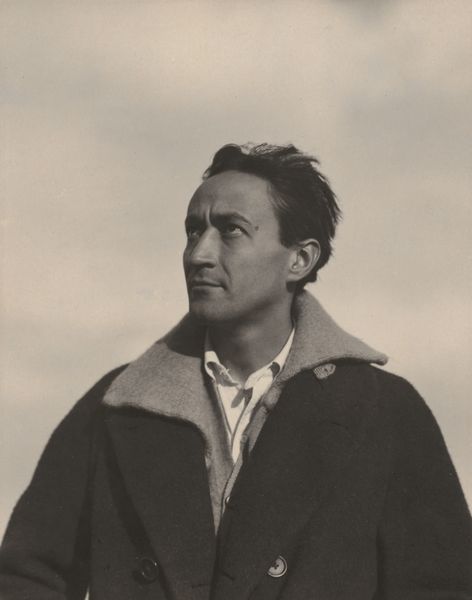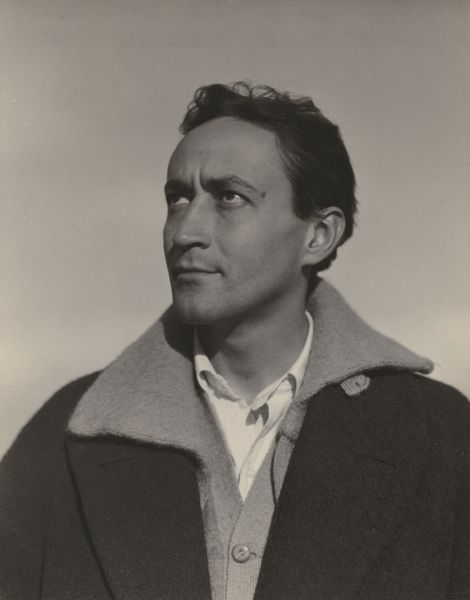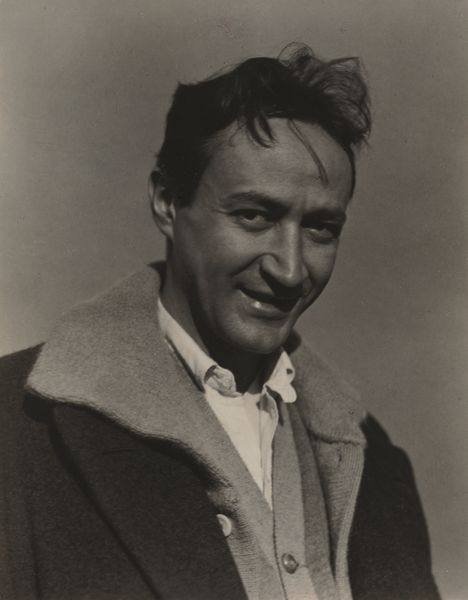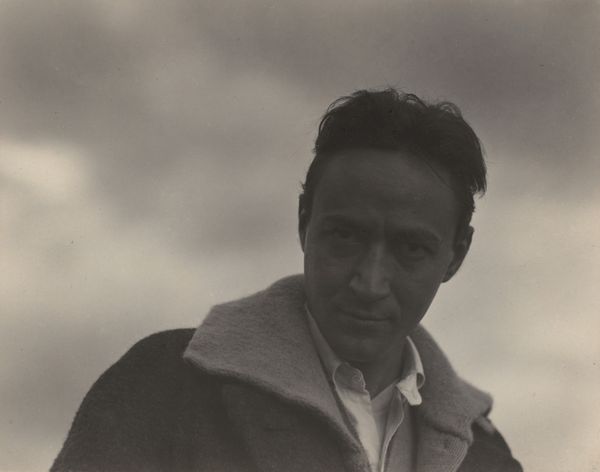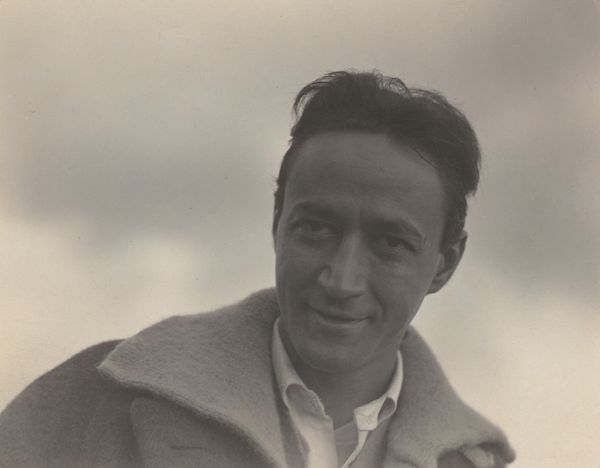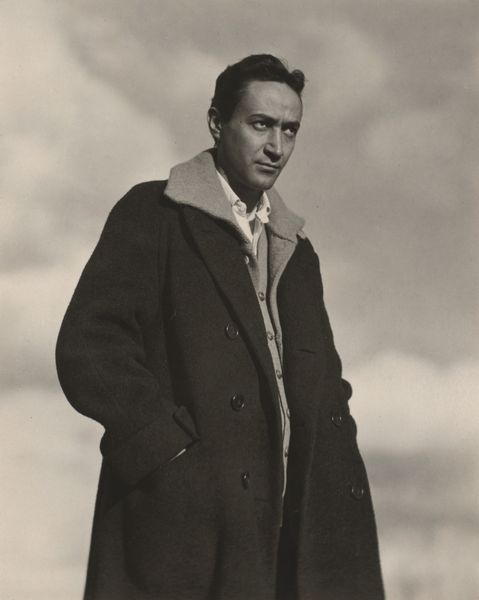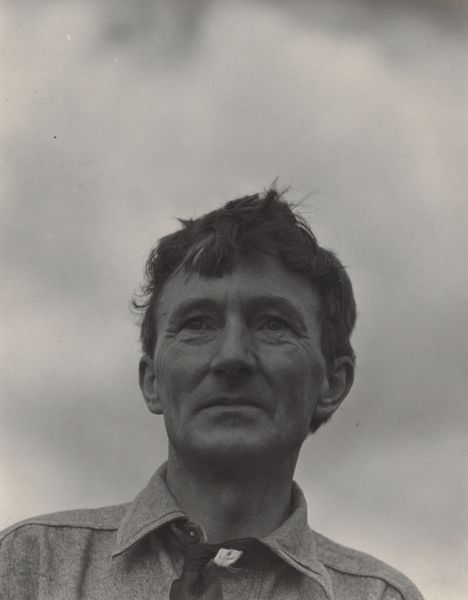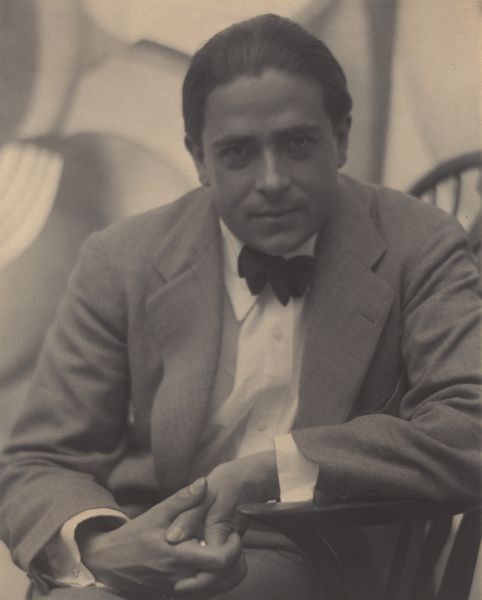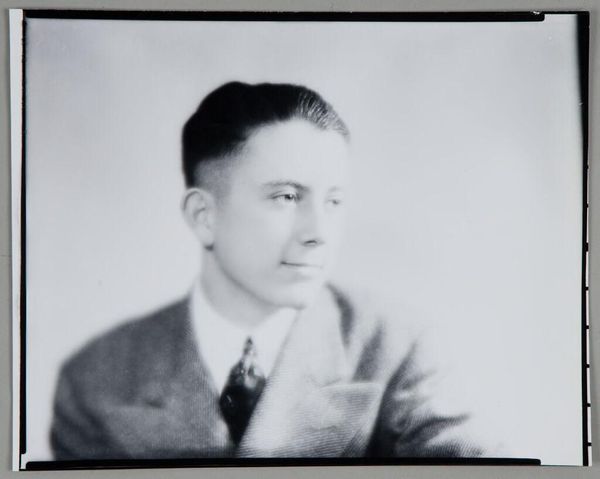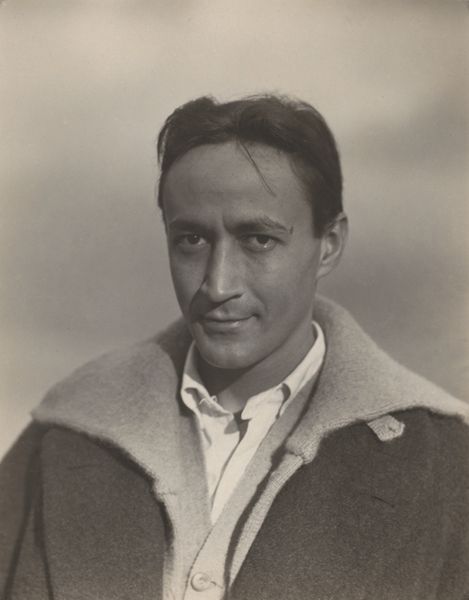
photography, gelatin-silver-print
#
portrait
#
pictorialism
#
photography
#
gelatin-silver-print
#
ashcan-school
#
modernism
Dimensions: sheet (trimmed to image): 9.15 × 11.7 cm (3 5/8 × 4 5/8 in.) mount: 34.2 × 27.5 cm (13 7/16 × 10 13/16 in.)
Copyright: National Gallery of Art: CC0 1.0
Curator: Here we have Alfred Stieglitz's 1925 gelatin-silver print, "Jean Toomer." It’s a compelling portrait. What are your immediate thoughts? Editor: The softness of the image strikes me—that muted contrast and diffused light create a sense of intimacy, almost vulnerability, even while Toomer appears to gaze confidently into the distance. Curator: Intimacy is a key element here. Stieglitz printed this at a time when pictorialism was morphing into straight photography, a method that championed the "machine-made" appearance of photographs with more fidelity to sharpness. This is part of his series of portraits intended to capture what he called "equivalents" – outer forms representing inner states. This material is just exquisitely made and demonstrates an attention to process. Editor: I think that's significant. The portrait aesthetic intersects intriguingly with Toomer’s identity. He famously navigated racial ambiguity in the Harlem Renaissance. Stieglitz, known for championing modernist aesthetics, here perhaps is using the "soft focus" of pictorialism to navigate representing this complexity. How do materials of photography themselves play into questions of identity formation, visuality, and representation here? Curator: Absolutely, the materials themselves reflect that intent. Look at the paper: the gelatin silver gives this unique tonal range, different than albumen prints for instance, and those variations change meaning too. Stieglitz had precise control over developing; printing was art too, for him, not merely recording what the lens saw. Editor: Exactly. And to think about the labour that went into it. These intentional decisions complicate ideas of authenticity. The composition, the gaze directed off-frame—they create this powerful sense of an interior life, made visible through layers of artistic choices intersecting the sitter’s complicated selfhood. There's so much here to unpack about race, identity, and the artistic gaze within this portrait. Curator: It certainly does encourage considering the interplay between art, artist, and the portrayed, revealing nuances we can still discuss today. Editor: Yes, it encourages us to engage with art as a reflection of society, pushing beyond traditional boundaries of portraiture and personal identity.
Comments
No comments
Be the first to comment and join the conversation on the ultimate creative platform.
